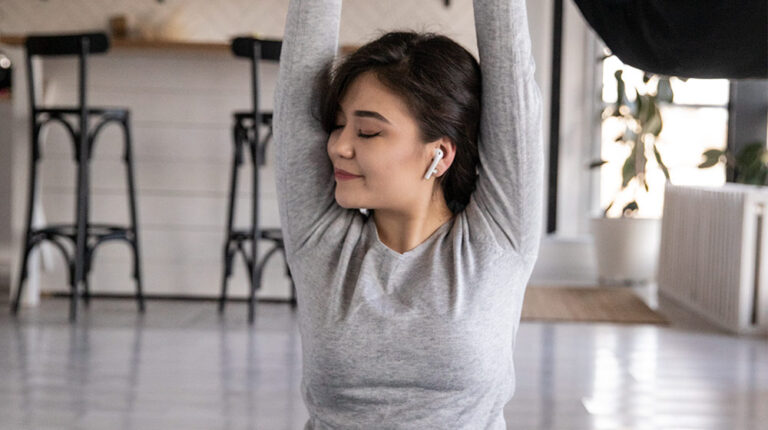Overview
Alcohol consumption is a widespread issue globally, with over 280 million people suffering from alcohol use disorder (AUD) and 3 million deaths annually attributed to excessive alcohol use. In addition, alcohol use is the leading cause of death and disability among those between the ages of 20 and 39, according to the World Health Organization (WHO).
Alcohol overconsumption is poisoning people. In many countries, heavy drinking and binge drinking is prevalent. It results in serious adverse effects on health, including liver disease, cancer, mental health problems, and an increased risk of accidents and violence. Also, alcohol use during pregnancy can cause serious harm to the fetus, leading to lifelong physical and cognitive disabilities. The cost of healthcare, the burden on families, and the human toll make alcohol a significant public health concern.
In this context, governments, public health organizations, and individuals are working to address the problem and reduce the impact caused by excessive alcohol use. Fortunately, there is one strategy that every individual can implement and make lives better without alcohol – exercise. So what is the connection between exercise and alcohol consumption? This article discusses how you can curb your alcohol cravings and stay fit.
Fit or Tipsy: Start Exercising Now Can Help You Curb Your Alcohol Cravings
Effects of Alcohol Consumption on Health
Fitness and Performance

Alcohol consumption can have a significant impact on fitness and performance levels. Firstly, alcohol is an “empty calorie” drink, providing no nutritional value and only adding to weight gain. In addition, consuming large amounts of alcohol over a long time can increase body fat and negatively impact overall body composition.
Secondly, alcohol also impairs muscle growth and recovery. When alcohol is consumed, it interferes with the body’s ability to absorb essential nutrients and repair muscle tissue, which is crucial for the development of muscles. This phenomenon can lead to decreased muscle mass, reduced strength, and slower recovery after exercise.
Finally, alcohol can impair the liver’s ability to process and eliminate toxins, including those produced by intense physical activity like lactic acid, which can contribute to muscle damage and increased risk of injury. Heavy drinking can also lead to dehydration, reducing athletic performance and impacting physical endurance.
Alcohol-related Diseases
Heavy alcohol consumption can profoundly impact the development of alcohol-related diseases. For example, the World Health Organization (WHO) has identified alcohol as a significant risk factor for over 200 conditions, including liver disease, pancreatitis, certain cancers, cardiovascular disease, and various mental health problems.
Alcohol is metabolized in the liver. Over time, repeated exposure to high levels of alcohol can cause damage to the liver cells, leading to a range of liver diseases, including cirrhosis and hepatitis. Furthermore, alcohol increases the risk of certain cancers, including liver and colon cancer, through its damaging effect on DNA and cancer-causing substances.
Heavy drinking is also linked to an increased risk of cardiovascular disease, including high blood pressure, stroke, and heart disease. The onset of these diseases is often the result of long-term exposure to high levels of alcohol and the development of cardiomyopathy. This disorder damages the heart muscle, leading to life-threatening consequences.
How Does Exercise Reduce Alcohol Consumption?
Physically
Exercise has a significant impact on reducing alcohol consumption by altering brain chemistry. Specifically, regular exercise has been linked to releasing hormones that improve mood and overall physical health while reducing cravings for alcohol.
For example, endorphins, the body’s natural feel-good hormones, are released during exercise, providing a sense of euphoria. By providing an alternative, natural source of mood enhancement, exercise can reduce the need for alcohol as a coping mechanism. Exercise also increases other mood-enhancing neurochemicals, such as dopamine and serotonin, which can help reduce the need for alcohol to cope with stress.
Regular exercise can also improve sleep, contributing to decreased alcohol consumption. When individuals are sleep-deprived, they often feel more stressed, which can lead to excessive alcohol use to cope with negative emotions. Sleep deprivation can also alter the body’s regulation of hormones, including cortisol and insulin, which regulate mood and hunger. These hormonal changes can contribute to poor decision-making abilities, causing individuals to make impulsive decisions, such as drinking excessively.
Psychologically
Exercise can also positively impact reducing alcohol consumption by changing addictive behaviors. Specifically, regular exercise has been linked to increased mental health while decreasing the likelihood of alcohol cravings.
For example, exercise acts as a psychological distraction from alcohol cravings. It can help reduce anxiety and depression, which are common triggers for excessive alcohol consumption. Exercise can also improve self-esteem and mental health, making individuals less likely to use alcohol to cope with negative feelings or stress.
In particular, improving self-esteem and mental health through regular exercise can help address the underlying psychological and emotional factors that contribute to excessive drinking. Usually, individuals who have experienced abuse are more likely to turn to alcohol as a relief to cope with the resulting trauma. Addressing these underlying factors through regular exercise can help individuals overcome past trauma and abuse to control their excessive drinking and improve their overall well-being.
Research on Exercise and Alcohol Consumption
A study on exercise and alcohol consumption showed that exercise was effective in reducing alcohol intake and improving fitness in individuals with alcohol use disorder (AUD). All types of exercise were included, such as aerobic exercise, yoga, and resistance training.
In particular, the exercise treatments lasted between 8 and 24 weeks (mean = 14.6 ± 6.5 weeks). In addition, the weekly exercise duration ranged from 90 to 150 minutes (mean = 127 ± 20 minutes). The study found a significant reduction in alcohol consumption and an improvement in physical fitness due to exercise. Thus, it highlights the potential benefits of exercise and suggests that exercise should be an adjunctive tool in treating AUD.
However, exercise treatments did not affect binge drinking episodes, although they lowered alcohol intake. Furthermore, little is yet understood about the ideal type, frequency, length, and intensity of exercise required to treat AUDs, reduce their elevated cardiometabolic risks, alleviate their associated depression, and enhance their mood.
What Type of Exercise to Reduce Alcohol Consumption
Aerobic Exercise
Aerobic exercise can help reduce alcohol use and enhance general health when incorporated into an alcohol dependency treatment strategy.
First, regular aerobic activity, such as brisk walking, cycling, and swimming, can boost one’s mood and lessen stress, both of which are the causes of binge drinking. By changing brain chemistry and lowering the pleasurable effects of drinking, aerobic exercise reduces alcohol cravings and makes it less appealing.
Besides, aerobic exercise can help boost confidence and self-efficacy, which are crucial for altering addictive behaviors. Also, achieving fitness goals may give people a sense of satisfaction, increasing their determination to abstain from alcohol. Regular exercise can also encourage a healthy lifestyle, making it easier to withstand the urge to drink.
Yoga
You can incorporate yoga into your lifestyle as a holistic approach to lowering alcohol intake by addressing physical, emotional, and mental problems.
First, yoga aids in managing stress and anxiety, which are frequently identified as causes of binge drinking. Yoga can also help people become more conscious of the emotional triggers for drinking so they can choose to abstain from it on purpose.
Besides, yoga can promote one’s sense of self-control, general well-being, and confidence, making it easier to resist drinking. The physical benefits that regular yoga may bring about, such as better sleep and more energy, can also lessen the need for alcohol as a source of stimulation or relaxation. Some yoga techniques, like Kundalini Yoga, incorporate breathing exercises and meditation, which help you control urges and consume less alcohol.
What Level of Exercise to Reduce Alcohol Consumption
To successfully reduce alcohol use, you should moderately exercise for at least 150 minutes per week. This amount may be split into five 30-minute sessions per week. Activities that fall within this category include brisk walking, cycling, and swimming.
Resistance training, such as weight lifting and bodyweight exercises, can also help reduce alcohol intake in addition to moderate-intensity activity. Also, resistance training can improve general fitness, body composition, and mental health, reducing the chance of binge drinking.
While exercise can aid in reducing alcohol use, it should not be a substitute for professional treatment for alcoholism. It has been demonstrated that the most successful method for decreasing alcohol intake is a combination of exercise and alcohol dependency therapy.
Does Exercise Reverse the Effects of Alcohol?
Exercise can lessen some consequences of alcohol use, but it is not a panacea and cannot undo all the harm. Alcohol is a toxin that has an impact on many physiological systems. Therefore, frequent and excessive drinking can result in significant and sometimes permanent health issues such as liver, heart, cognitive, and digestive illnesses.
However, some of the adverse effects of alcohol can be mitigated by exercise. As well as enhancing brain health and cognitive performance, it can lower the risk of liver disease and improve heart and lung health. Regular exercise can also help maintain a healthy weight, lower stress levels, and enhance sleep quality – all of which can be harmed by alcohol.
Limiting or avoiding alcohol is the best strategy to safeguard your health and minimize its impact. Still, if you choose to drink, do so in moderation (1 drink for women, 2 for men), and adopt a healthy lifestyle by engaging in regular exercise and eating a balanced diet.
References
Lardier, D. et al. (2021). Exercise as a Useful Intervention to Reduce Alcohol Consumption and Improve Physical Fitness in Individuals With Alcohol Use Disorder: a Systematic Review and Meta-analysis.
If you have questions about exercise and alcohol consumption or any health problems discussed here, connect with us and learn more.
At Peak Human, our team of healthcare professionals helps you reach your ‘peak’ health with a custom whole-person approach. Using the most cutting-edge, science-backed biohacking and aesthetic tools available today, we help you achieve the highest physical/cognitive performance state, leading to an improved overall quality of life.
Don’t hesitate to contact us for questions or to book an appointment. Get personalized support and insight from expert physicians.
UP NEXT:
- Impact of Intermittent Fasting on Sleep
- The Role of Intestinal Permeability in Human Health
- Understanding Metabolic Switch and Its Role in Weight Loss








